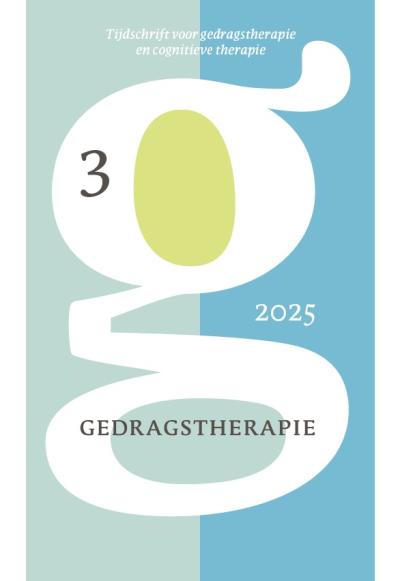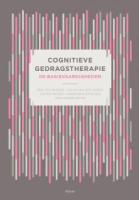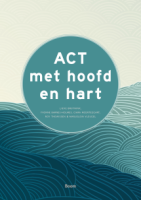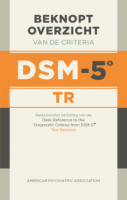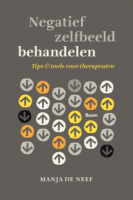Inhoud
Vermeende contra-indicaties voor (imaginaire) exposurebehandeling van PTSS onder de loep
Samenvatting
Hoewel van alle gangbare behandelingen voor posttraumatische stressstoornis (PTSS) de empirische onderbouwing voor exposuretherapie het sterkst is, zijn behandelaars toch terughoudend in het toepassen ervan. Dit vanwege de idee dat er voor veel PTSS-patiënten contra-indicaties bestaan, in het bijzonder voor patiënten met comorbide problematiek. Omdat comorbiditeit bij PTSS hoog is, is het van belang bij deze patiënten te bezien of er mogelijk sprake is van een contra-indicatie voor exposure. In deze overzichtsstudie bespreken wij de empirische argumenten voor of tegen exposurebehandeling voor patiënten die naast PTSS andere, vaak aan de PTSS-gerelateerde problematiek hebben ontwikkeld, waaronder dissociatie, borderline persoonlijkheidsstoornis, psychotische stoornissen, suïcidaliteit, zelfverwonding, middelenafhankelijkheid of - misbruik of depressie. De conclusie luidt dat ook bij patiënten met comorbide aandoeningen exposure veilig en effectief kan worden toegepast, waarbij veelal zowel de symptomen van de PTSS als die van de comorbide stoornissen afnemen. Ook indien er sprake is van ernstige comorbiditeit kan de PTSS met exposure worden behandeld, al is een geïntegreerde of gelijktijdige benadering waarbij de comorbide klachten worden gevolgd en behandeld dan raadzaam.
Literatuur
- Achim, A.M., Maziade, M., Raymond, E., Olivier, D., Mérette, C., & Roy, M.A. (2011). How prevalent are anxi ety disorders in schizophrenia? A meta-analysis and critical review on a significant association. Schizophre nia Bulletin, 37(4), 811–821.
- Aderka, I.A., Foa, E.B., Applebaum, E., Shafran, N., & Gilboa-Schechtman, E. (2011). Direction of influence between posttraumatic and depressive symptoms during prolonged exposure therapy among children and adolescents. Journal of Consulting and Clinical Psychology, 79, 421–425.
- Asukai, N., Saito, A., Tsuruta, N., Kishimoto, J., & Nishikawa, T. (2010). Efficacy of exposure therapy for Japanese patients with posttraumatic stress disorder due to mixed traumatic events: A randomized controlled study. Journal of Traumatic Stress, 23, 744750.
- Back, S.E. (2010). Toward an improved model of treating co-occurring ptsd and substance use disorders. The American Journal of Psychiatry, 167(1), 11-13.
- Back, S.E., Dansky, B.S., Carroll, K.M., Foa, E.B., & Brady, K. T. (2001). Exposure therapy in the treatment of ptsd among cocaine-dependent individuals: description of procedures. Journal of Substance Abuse Treatment, 21(1), 35-45.
- Back, S.E., Killeen, T., Foa, E.B., Santa Ana, E.J., Gros, D.F., & Brady, K.T. (2012). Use of an integrated therapy with prolonged exposure to treat ptsd and comorbid alcohol dependence in an Iraq veteran. The American Journal of Psychiatry, in press.
- Ballinger, J.C., Davidson, J.R.T., Lecrubier, Y., Nutt, D.J., Marshall, R.D., Nemeroff, C.B., Shalev, A.Y., & Yehuda, R. (2004). Consensus statement update on posttraumatic stress disorder from the international consensus group on depression and anxiety. Journal of Clinical Psychiatry, 65, 55-62.
- Becker, C., Zayfert, C., & Anderson, E. (2004). A survey of psychologists' attitudes towards and utilization of exposure therapy for ptsd. Behaviour Research and Therapy, 42(3), 277-292.
- Bohus, M., Kruger, A., Dyer, A., Priebe, K., & Steil, R. (2011, April). Residential DBT program for patients with borderline personality disorder and ptsd after childhood sexual abuse: A controlled randomized trial. Presented at the 8th Annual NIMH Conference of the National Education Alliance for Borderline Personality Disorder, Seattle, WA.
- Brady, K.T., Dansky, B.S., Back, S E., Foa, E.B., & Carroll, K.M. (2001). Exposure therapy in the treatment of ptsd among cocaine-dependent individuals: Preliminary findings. Journal of Substance Abuse Treatment, 21(1), 47-54.
- Briere, J., Scott, C., & Weathers, F. (2005). Peritraumatic and persistent dissociation in the presumed etiology of ptsd. The American Journal of Psychiatry, 162(12), 2295-2301.
- Bryant, R.A. (2007). Does dissociation further our understanding of ptsd? Journal of Anxiety Disorders, 21(2), 183-191.
- Buckley, P.F., Miller, B.J., Lehrer, D.S. & Castle, D.J. (2009). Psychiatric comorbidities and schizophrenia. Schizophrenia Bulletin, 35(2), 383–402.
- Clarke, S.B., Rizvi, S.L., & Resick, P.A. (2008). Borderline personality characteristics and treatment outcome in cognitive-behavioral treatments for ptsd in female rape victims. Behavior Therapy, 39, 72-78.
- Cloitre, M., Courtois, C. A., Charuvastra, A., Carapezza, R., Stolbach, B.C., & Green, B.L. (2011). Treatment of complex ptsd: Results of the ISTSS expert clinician survey on best practices. Journal of Traumatic Stress, 24, 615-627.
- Cloitre, M., Koenen, K.C., Cohen, L.R., & Han, H. (2002). Skills training in affective and interpersonal regulation followed by exposure: A phase-based treatment for ptsd related to childhood abuse. Journal of Consulting and Clinical Psychology, 70, 1067-1074.
- Cloitre, M., Stovall-McClough, K.C., Nooner, K., Zorbas, P., Cherry, S., Jackson, C.L., Gan, W., & Petkova, E. (2010). Treatment for ptsd related to childhood abuse: A randomized controlled trial. American Journal of Psychiatry, 167, 915-924.
- Cottler, L.B., Compton, W.M., Mager, D., Spitznagel, E.L., & Janca, A. (1992). Post-traumatic stress disorder among substance abusers from the general population. American Journal of Psychiatry, 149, 664-670.
- Cougle, J.R., Keough, M.E., Riccardi, C.J., & Sachs-Ericsson, N. (2009). Anxiety disorders and suicidality in the National Comorbidity Survey-Replication. Journal of Psychiatric Research, 43, 825-829.
- Dam, D. van, Vedel, E., Ehring, T., & Emmelkamp, P. M. G. (2012). Psychological treatments for concurrent posttraumatic stress disorder and substance use disorder: A systematic review. Clinical Psychology Review, 32(3), 202-214.
- De Bont, P., Minnen, A. van, & De Jongh, A. (2013). Treating ptsd in patients with psychosis: A within-group controlled feasibility study examining the efficacy and safety of evidence-based PE and emdr Protocols. Behavior Therapy, http://dx.doi.org/10.1016/j.beth.2013.07.002
- Department of Veterans Affairs/Department of Defense. (2004). VA/DoD clinical practice guideline for the management of post-traumatic stress, version 1.0. Washington, DC: Veterans Health Administration, Department of Defense.
- Dyer, K.F.W., Dorahy, M.J., Hamilton, G., Corry, M., Shannon, M., MacSherry, A., McRobert, G., Elder, R., & McElhill, B. (2009). Anger, aggression, and self-harm in ptsd and complex ptsd. Journal of Clinical Psychology, 65, 1099-1114.
- Echiverri, A., Jaeger, J., Chen, J., Moore, S., & Zoellner, L.A. (2011). Dwelling in the past: The role of rumination in the treatment of posttraumatic stress disorder. Cognitive and Behavioral Practice, 18, 338-349.
- Feeny, N.C., Zoellner, L.A., & Foa, E.B. (2002). Treatment outcome for chronic ptsd among female assault victims with borderline personality characteristics: A preliminary examination. Journal of Personality Disorders, 16, 30-40.
- Feeny, N.C., Zoellner, L.A., Mavissakalian, M.R., & Roy-Byrne, P.P. (2009). What would you choose? Sertraline or prolonged exposure in community and ptsd treatment seeking women. Depression and Anxiety, 28, 724-731.
- Foa, E.B., Dancu, C.V., Hembree, E.A., Jaycox, L.H., Meadows, E.A., & Street, G.P. (1999). A comparison of exposure therapy, stress inoculation training, and their combination for reducing posttraumatic stress disorder in female assault victims. Journal of Consulting and Clinical Psychology, 67, 194-200.
- Foa, E.B., Hembree, E.A., Cahill, S.P., Rauch, S.A.M., Riggs, D.S., Feeny, N.C., & Yadin, E. (2005). Randomized trial of prolonged exposure for posttraumatic stress disorder with and without cognitive restructuring: Outcome at academic and community clinics. Journal of Consulting and Clinical Psychology, 73, 953-964.
- Foa, E. B., Hembree, E.A.,& Rothbaum, B.O. (2007). Prolonged Exposure Therapy for ptsd: Emotional Processing of Traumatic Experiences Therapist Guide. New York, NY: Oxford University Press.
- Foa, E.B., Huppert, J.D., & Cahill, S. P. (2006). Emotional processing theory: An update. In B. O. Rothbaum (Eds.), Pathological anxiety: Emotional processing in etiology and treatment. New York, US: Guilford Press.
- Foa, E.B., Keane, T.M., Friedman, M.J., & Cohen, J.A. (2009). Effective treatments for ptsd: Practice guidelines from the International Society for Traumatic Stress Studies (2nd ed.). New York, US: Guilford Press.
- Foa, E.B., & Rauch, S.A.M. (2004). Cognitive changes during prolonged exposure versus prolonged exposure plus cognitive restructuring in female assault survivors with posttraumatic stress disorder. Journal of Consulting and Clinical Psychology, 72, 879884.
- Foa, E.B., & Rothbaum, B.O. (1998). Treating the trauma of rape: Cognitive-behavioral therapy for ptsd. New York: Guilford Press. Foa, E. B., Rothbaum, B.O., Riggs, D.S., & Murdock, T.B. (1991). Treatment of post traumatic stress disorder in rape victims: A comparison between cognitive–behavioral procedures and counseling. Journal of Consulting and Clinical Psychology, 59, 715-723.
- Forbes, D., Creamer, M., Phelps, A., Bryant, R., McFarlane, A., Devilly, G.J., & Newton, S. (2007). Australian guidelines for the treatment of adults with acute stress disorder and post-traumatic stress disorder. Australian and New Zealand Journal of Psychiatry, 41, 637-648.
- Frueh, B.C., Grubaugh, A.L., Cusack, K.J., Kimble, M.O., Elhai, J.D., Knapp, R.G. (2009). Exposure-based cognitive-behavioral treatment of ptsd in adults with schizophrenia or schizoaffective disorder: A pilot study. Journal of Anxiety Disorders, 23, 665–675.
- Gilboa-Schechtman, E., Foa, E.B., Shafran, N., Aderka, I.M., Poerwers, M.B., Rachamim, L., Rosenbach, L., Yadin, E., & Apter, A. (2010). Prolonged exposure versus dynamic therapy for adolescent ptsd: a pilot randomized controlled trial. Journal of the American Academy of Child and Adolescent Psychiatry, 49, 1034-1042.
- Hagenaars, M.A., Minnen, A. van, & Rooij, M. de (2011). Cognitions in prolonged exposure therapy for posttraumatic stress disorder. International Journal of Clinical and Health Psychology, 10, 421-434.
- Hagenaars, M.A., Minnen, A. van, & Hoogduin, K.A.L. (2010). The impact of dissociation and depression on the efficacy of prolonged exposure treatment for ptsd. Behaviour Research and Therapy, 48(1), 19-27.
- Harned, M.S. (in press). Treatment of posttraumatic stress disorder with comorbid borderline personality disorder: Integrating Dialectical Behavior Therapy and Prolonged Exposure. In D. McKay & E. Storch (Eds.), Handbook of Treating Variants and Complications in Anxiety Disorders. New York, US: Springer Press.
- Harned, M.S., Korslund, K.E., Foa, E.B., & Linehan, M.M. (2012). Treating ptsd in suicidal and self-injuring women with borderline personality disorder: Development and preliminary evaluation of a Dialectical Behavior Therapy Prolonged Exposure Protocol. Behaviour Research and Therapy, 50, 381-386.
- Heffernan, K. & Cloitre, M. (2000). A comparison of posttraumatic stress disorder with and without borderline personality disorder amone women with a history of childhood sexual abuse: Etiological and clinical characteristics. Journal of Nervous and Mental Disease, 188, 589-595.
- Hendriks, L., Kleine, R. de, Rees, M. van, Bult, C., & Minnen, A. van (2010). Feasibility of brief intensive exposure therapy for ptsd patients with childhood sexual abuse: a brief clinical report. European Journal of Psychotraumatology, 1, 5626 - DOI: 10.3402/ejpt.v1i0.5626.
- Hien, D.A., Jiang, H., Campbell, A.N.C., Hu, M-C., Miele, G.M. , Cohen, L.R., & Nunes, E.V. (2009). Do treatment improvements in ptsd severity affect substance use outcomes? A secondary analysis from a randomized clinical trial in NIDA's Clinical Trials Network. The American Journal of Psychiatry, 167(1), 95-101.
- Hunter, E.C.M., Sierra, M., & David, A.S. (2004). The epidemiology of depersonalisation and derealisation. A systematic review. Social Psychiatry and Psychiatric Epidemiology, 39, 9–18.
- Institute of Medicine (2007). Treatment of ptsd: An Assessment of The Evidence. Washington, DC, US: National Academy of Sciences.
- Jaycox, L.H., Foa, E.B., & Morral, A.R. (1998). Influence of emotional engagement and habituation on exposure therapy for ptsd. Journal of Consulting and Clinical Psychology, 66, 185–192.
- Jaycox, L.H., Zoellner, L.A., & Foa, E.B. (2002). Current Perspectives: Cognitive behavior therapy for ptsd in rape survivors. Journal of Clinical Psychology, 58(8), 891-906.
- Kessler, R.C., Chiu, W.T., Demler, O., & Walters, E.E. (2005). Prevalence, severity, and comorbidity of 12-month DSM-IV disorders in the National Comorbidity Survey Replication. Archives of General Psychiatry, 62, 617-627.
- Kessler, R.C., Sonnega, A., Bromet, E., Hughes, M., & Nelson, C.B. (1995). Posttraumatic stress disorder in the National Comorbidity Survey. Archives of General Psychiatry, 52, 1048-1060.
- Killeen, T.K., Back, S.E., & Brady, K.T. (2011). The use of exposure-based treatment among individuals with ptsd and co-occurring substance use disorders: clinical considerations. Journal of Dual Diagnosis, 7(4), 194-206.
- Kleine, R.A. de, Hendriks, G.J., Kusters, WJ.C., Broekman, T.G., & Minnen, A. van (2012). A randomized placebo-controlled trial of D-Cycloserine to enhance exposure therapy or posttraumatic stress disorder. Biological Psychiatry, doi:10.1016/j.biopsych.2012.02.033.
- Lasser, K., Boyd, J. W., Woolhandler, S., Himmelstein, D. U., McCormick, D., & Bor, D. H. (2000). Smoking and mental illness. JAMA: The Journal of the American Medical Association, 284(20), 2606-2610. doi: 10.1001/jama.284.20.2606
- Linehan, M.M., Bohus, M., & Lynch, T.R. (2007). Dialectical Behavior Therapy for pervasive emotion dysregulation: Theoretical and practical underpinnings (pp. 581-605). In J. Gross (Ed.), Handbook of Emotion Regulation. New York, US: Guilford Press.
- Marks, I., Lovell, K., Noshirvani, H., Livanou, M., & Thrasher, S. (1998). Treatment of post traumatic stress disorder by exposure and/or cognitive restructuring. A controlled study. Archives of General Psychiatry, 55, 317-325.
- McDonagh, A., Friedman, M., McHugo, G., Ford, J., Sengupta, A., Mueser, K., Descamps, M. (2005). Randomized trial of cognitive-behavioral therapy for chronic posttraumatic stress disorder in adult female survivors of childhood sexual abuse. Journal of Consulting and Clinical Psychology, 73, 515-524.
- Mills, K.L., Teesson, M., Back, S.E., Brady, K.T., Baker, A., Hopwood, S., Sannibale, C., Barrett, E.L., Merz, S., Rosenfeld, J., & Ewer, P.L. (2012). Integrated exposure based therapy for co-occurring posttraumatic stress disorder and substance dependence: A randomized controlled trial. The Journal of the American Medical Association, 308, 690699.
- Mills, K.L, Teesson, M., Ross, J., & Peters, L. (2006). Trauma, ptsd, and substance use disorders: Findings from the Australian National Survey of Mental Health and WellBeing. The American Journal of Psychiatry, 163(4), 652-658.
- Minnen, A. van, & Arntz, A. (2011). Protocollaire behandeling van patiënten met een posttraumatische stressstoornis: (imaginaire) exposure. In: Keijsers, G., Van Minnen, A., & Hoogduin, K (Red). Protocollaire behandelingen voor volwassenen met psychische klachten, deel 1 (pp 181-213). Amsterdam: Boom.
- Minnen, A. van, Arntz, A., & Keijsers, G.P.J. (2002). Prolonged exposure in patients with chronic ptsd: predictors of treatment outcome and dropout. Behaviour Research and Therapy, 40(4), 439-457.
- Minnen, A., van, Hendriks, L., & Olff, M. (2010). When do trauma professionals choose exposure therapy for ptsd-patients? A controlled study about the influence of therapist and patient factors. Behaviour Research and Therapy, 48, 312-320.
- Multidisciplinaire richtlijn angststoornissen. (2009). Posttraumatische stress-stoornis. Utrecht: Trimbos-instituut.
- Nacasch, N., Foa, E.B., Huppert, J.D., Tzur, D., Fostick, L., Dinstein, Y., Polliack, M., & Zohar, J. (2011). Prolonged exposure therapy for combat- and terror-related posttraumatic stress disorder: A randomized control comparison with treatment as usual. Journal of Clinical Psychiatry, 72, 1174-1180.
- Najavits, L.M. (2006). Present- versus past-focused therapy for posttraumatic stress disorder/ substance abuse: A study of clinician preferences. Brief Treatment and Crisis Intervention, 6(3), 248-254.
- Najavits, L.M., Schmitz, M., Gotthardt, S., & Weiss, R.D. (2005). Seeking Safety plus Exposure Therapy: an outcome study on dual diagnosis men. Journal of Psychoactive Drugs, 37(4), 425-435.
- Najavits, L.M., Weiss, R.D., Shaw, S.R., & Muenz, L.R. (1998). "Seeking safety": outcome of a new cognitive-behavioral psychotherapy for women with posttraumatic stress disorder and substance dependence. Journal of Traumatic Stress. 11(3), 437-456.
- Nemeroff, C.B., Bremner, J.D., Foa, E.B., Mayberg, H.S., North, C.S., & Stein, M.B. (2006). Posttraumatic stress disorder: A state-of-the-science review. Journal of Psychiatric Research, 40, 1-21.
- NICE. (2005). Post-traumatic stress disorder (ptsd): The management of ptsd in adults and children in primary and secondary care. London: National Institute for Clinical Excellence.
- Nock, M.K., Hwang, I., Sampson, N.A., & Kessler, R.C. (2010). Mental disorders, comorbidity and suicidal behavior: Results from the National Comorbidity Survey Replication. Molecular Psychiatry, 15, 868-876.
- Norberg, M.M., Krystal, J.H., & Tolin, D.F. (2008). A meta-analysis of d-cycloserine and the facilitation of fear extinction and exposure therapy. Biological Psychiatry, 63, 1118-1126.
- O'Donnell, M.L., Creamer, M., & Pattison, P. (2004). Posttraumatic stress disorder and depression following trauma: Understanding comorbidity. The American Journal of Psychiatry, 161, 1390-1396.
- Olatunji, B.O., Cisler, T.M., & Tolin, D.M. (2010). A meta-analysis of the influence of comorbidity on treatment outcome in the anxiety disorders. Clinical Psychology Review, 30, 642-654.
- Ouimette, P., Moos, R.H., & Brown, P.J. (2003). Substance use disorder-posttraumatic stress disorder comorbidity: A survey of treatments and proposed practice guidelines. In P. Ouimette, & P. J. Brown (Eds.), Trauma and substance abuse: Causes, consequences, and treatment of comorbid disorders (pp. 91-110). Washington: American Psychological Association.
- Pagura, J., Stein, M.B., Bolton, J.M., Cox, B.J., Grant, B., & Sareen, J. (2010). Comorbidity of borderline personality disorder and posttraumatic stress disorder in the U.S. population. Journal of Psychiatric Research, 44, 1190-1198.
- Post, L.M., Zoellner, L.A., Youngstrom, E., & Feeny, N.C. (2011). Understanding the relationship between co-occurring ptsd and MDD: Symptom severity and affect. Journal of Anxiety Disorders, 25, 1123-1130. versus exposure plus cognitive restructuring versus waiting list in the treatment of post-traumatic stress disorder. Clinical Psychology and Psychotherapy, 9, 299-318.
- Powers, M.B., Halpern, J.M., Ferenschak, M.P., Gillihan, S.J., & Foa, E.B. (2010). A meta analytic review of prolonged exposure for posttraumatic stress disorder. Clinical Psychology Review, 30(6), 635-641.
- Read, J., Hammersley, P., & Rudegeair, T. (2007). Why, when and how to ask about childhood abuse. Advances in Psychiatric Treatment, 13(2), 101-110.
- Read, J., Van Os, J., Morrison, A., & Ross, C. (2005). Childhood trauma, psychosis and schizophrenia: a literature review with theoretical and clinical implications. Acta Psychiatrica Scandinavica, 112(5), 330-350.
- Reissig, C J., Strain, E.C., & Griffiths, R.R. (2009). Caffeinated energy drinks—A growing problem. Drug and Alcohol Dependence, 99, 1-10.
- Resick, P.A., Galovski, T.E., Uhlmansiek, M.O., Scher, C.D., Clum, G.A., & Young-Xu, Y. (2008). A randomized clinical trial to dismantle components of cognitive processing therapy for posttraumatic stress disorder in female victims of interpersonal violence. Journal of Consulting and Clinical Psychology, 76, 243–258.
- Resick, P.A., Nishith, P., Weaver, T.L., Astin, M.C., & Feuer, C.A. (2002). A comparison of cognitive-processing therapy with prolonged exposure and a waiting condition for the treatment of chronic posttraumatic stress disorder in female rape victims. Journal of Consulting and Clinical Psychology, 70, 867-879. Resick, P.A., Suvak, M.K., Johnides, B.D., Mitchell, K.S., & Iverson, K.M. (2012). The impact of dissociation on ptsd treatment with cognitive processing therapy. Depression and Anxiety, 00, 1-12.
- Resick, P.A., Williams, L.F., Suvak, M.K., Monson, C.M., & Gradus, J.L. (2012). Long-term out comes of cognitive–behavioral treatments for posttraumatic stress disorder among female rape survivors. Journal of Consulting and Clinical Psychology, 80, 201-210.
- Rizvi, S.L., Vogt, D.S., & Resick, P.A. (2009). Cognitive and affective predictors of treatment outcome in cognitive processing therapy and prolonged exposure for posttraumatic stress disorder. Behaviour Research and Therapy, 47, 737–743.
- Rothbaum, B.O., Astin, M.C., & Marsteller, F. (2005). Prolonged exposure versus eye movement desensitization and reprocessing (EMDR) for ptsd rape victims. Journal of Traumatic Stress, 18, 607-616.
- Sar, V., (2011). Developmental trauma, complex ptsd and the current proposal of DSM-5. European Journal of Psychotraumatology, 2, 5622.
- Schneier, F.R., Neria, Y., Pavlicova, M., Hembree, E., Suh, E.J., Amsel, L., & Marshall, R.D. (2012). Combined prolonged exposure therapy and paroxetine for ptsd related to the world trade center attack: A randomized controlled trial. American Journal of Psychiatry, 169, 80-88.
- Schnurr, P.P., Friedman, M.J., Engel, C.C., Foa, E.B., Shea, M.T., Chow, B.K., & Bernardy, N. (2007). Cognitive behavioral therapy for posttraumatic stress disorder in women: A randomized controlled trial. JAMA: The Journal of the American Medical Association, 297(8), 820-830.
- Speckens, A.E.M., Ehlers, A., Hackmann, A., & Clark, D.M. (2006). Changes in intrusive memories associated with imaginal reliving in posttraumatic stress disorder. Journal of Anxiety Disorders, 20, 328–341.
- Spinazolla, J., Blaustein, M., & Kolk, B.A. van der (2005). Posttraumatic Stress Disorder Treatment Outcome Research: The study of Unrepresentative Samples? Journal of Traumatic Stress, 18(5), 425- 436.
- Tarrier, N., Sommerfield, C., Pilgrim, H., & Faragher, B. (2000). Factors associated with outcome of cognitive-behavioural treatment of chronic post-traumatic stress disorder. Behavior Research and Therapy, 38, 191-202.
- Taylor, S., Federoff, I.C., Koch, W.J., Thordarson, D.S., Fecteau, G., & Nicki, R.M. (2001). Post traumatic stress disorder arising after road traffic collisions: patterns of response to cognitive-behavior therapy. Journal of Consulting and Clinical Psychology, 69, 541– 551.
- Taylor, S. Thordarson, D.S., Maxfield, L., Fedoroff, I.C., Lovell, K., & Ogrodniczuk, J. (2003). Comparative efficacy, speed, and adverse effects of three ptsd treatments: exposure therapy, EMDR, and relaxation training. Journal of Consulting and Clinical Psychology, 71,330-338.
- Triffleman, E. (2000). Gender differences in a controlled pilot study of psychosocial treatments in substance dependent patients with post-traumatic stress disorder: Design considerations and outcomes. Alcohol Treatment Quarterly. 18(3),113-126.
- Triffleman, E., Carroll, K., & Kellogg, S. (1999). Substance dependence posttraumatic stress disorder therapy: An integrated cognitive-behavioral approach. Journal of Substance Abuse Treatment, 17(1-2), 3-14.
- Tronson, N.C., Schrick, C., Fischer, A., Sananbenesi, F., Pagès, G., Pouysségur, J., & Radulovic, J. (2008). Regulatory mechanisms of fear extinction and depression-like behavior. Neuropsychopharmacology, 33, 1570-1583.
- Yehuda, R., Bierer, L.M., Pratchett, L., & Malowney, M. (2010). Glucocorticoid augmentation of prolonged exposure therapy: rationale and case report. European Journal of Psychotraumatology, 1, 5643.
- Young, M., Read, J., Barker-Collo, S., & Harrison, R. (2001). Evaluating and overcoming barriers to taking abuse histories. Professional Psychology: Research and Practice, 32, 407-414.
- Zlotnick, C., Mattia, J. I., & Zimmerman, M. (1999). Clinical correlates of self-mutilation in a sample of general psychiatric patients. Journal of Nervous and Mental Disease, 187, 296-301.
 © 2009-2025 Uitgeverij Boom Amsterdam
© 2009-2025 Uitgeverij Boom Amsterdam
De artikelen uit de (online)tijdschriften van Uitgeverij Boom zijn auteursrechtelijk beschermd. U kunt er natuurlijk uit citeren (voorzien van een bronvermelding) maar voor reproductie in welke vorm dan ook moet toestemming aan de uitgever worden gevraagd:
Behoudens de in of krachtens de Auteurswet van 1912 gestelde uitzonderingen mag niets uit deze uitgave worden verveelvoudigd, opgeslagen in een geautomatiseerd gegevensbestand, of openbaar gemaakt, in enige vorm of op enige wijze, hetzij elektronisch, mechanisch door fotokopieën, opnamen of enig andere manier, zonder voorafgaande schriftelijke toestemming van de uitgever.
Voor zover het maken van kopieën uit deze uitgave is toegestaan op grond van artikelen 16h t/m 16m Auteurswet 1912 jo. Besluit van 27 november 2002, Stb 575, dient men de daarvoor wettelijk verschuldigde vergoeding te voldoen aan de Stichting Reprorecht te Hoofddorp (postbus 3060, 2130 KB, www.reprorecht.nl) of contact op te nemen met de uitgever voor het treffen van een rechtstreekse regeling in de zin van art. 16l, vijfde lid, Auteurswet 1912.
Voor het overnemen van gedeelte(n) uit deze uitgave in bloemlezingen, readers en andere compilatiewerken (artikel 16, Auteurswet 1912) kan men zich wenden tot de Stichting PRO (Stichting Publicatie- en Reproductierechten, postbus 3060, 2130 KB Hoofddorp, www.cedar.nl/pro).
No part of this book may be reproduced in any way whatsoever without the written permission of the publisher.
Inloggen VGCt en VVGT
Leden van de VGCt en de VVGT loggen in via de site van hun vereniging. Als u op die site bent ingelogd als lid, vindt u daar een button naar het Tijdschrift voor Gedragstherapie.
English
Behavioral Therapy: Journal for Behavioral Therapy and Cognitive Therapy ISSN 0167-7454
Information in English can be found here.



